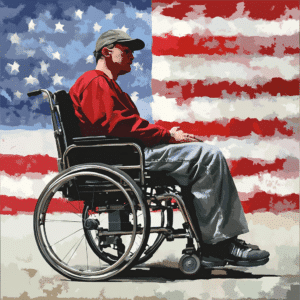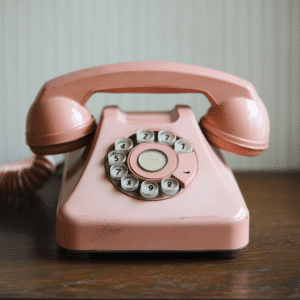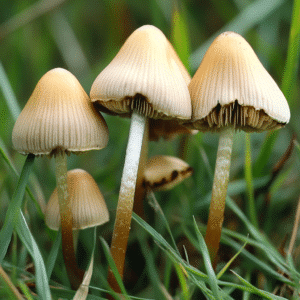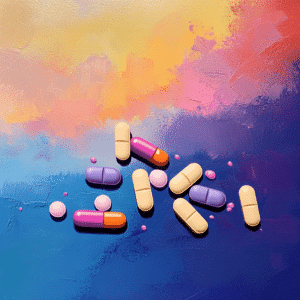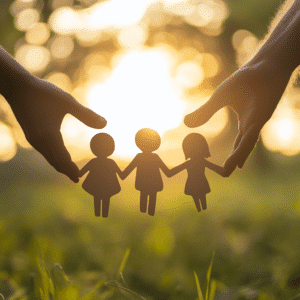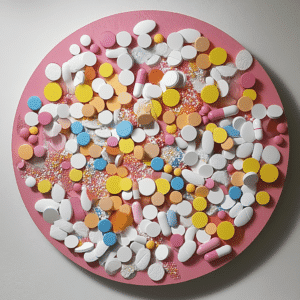In our ever-changing society, federal addiction programs have become critical lifelines for families affected by addiction. As we move into 2024, it’s more evident than ever that these programs are stepping up to address the pressing needs of those grappling with substance use disorders (SUDs). By focusing on treatment access, educational outreach, and prevention strategies, these initiatives create a network of support that not only aids individuals but also uplifts entire communities.
The heart of these federal addiction programs lies in collaboration—between various levels of government and local organizations. This collaborative spirit ensures resources are allocated effectively, allowing parents and families to find the support they need when dealing with addiction. Whether it’s through educational resources, direct support services, or community initiatives, the overarching goal remains the same: to foster environments conducive to recovery and healing.
So, what exactly are these programs doing—and how are they making a tremendous difference? Let’s dive deeper into the top federal addiction programs that are paving the way for change.
Top 7 Federal Addiction Programs Making a Difference
SAMHSA is at the forefront, leading various initiatives to support those affected by addiction. One of their major efforts, the Substance Abuse Prevention and Treatment (SAPT) Block Grant, allocates critical funds to states for prevention and treatment services. In 2023, SAMHSA awarded over $2 billion in grants, significantly enhancing local treatment facilities and recovery programs across the country. You can find more insights about the impacts of these federal addiction programs in our Parents Of Addicts blog.
This initiative, backed by the Department of Health and Human Services (HHS), zeroes in on communities ravaged by the opioid crisis. CORT provides essential funding for education and naloxone distribution—an emergency treatment that can reverse opioid overdoses. Cities like Huntington, West Virginia, have utilized this program, seeing significant drops in overdose rates and enhancing local responsiveness, demonstrating the effectiveness of federal addiction programs.
Engaging youth and families is essential in preventing substance misuse, and that’s precisely what the DFC program does. By funding grassroots coalitions, DFC empowers communities to promote healthy choices among adolescents. In 2023, over 700 coalitions received funding, generating a sense of community and advocacy across urban settings like Philadelphia and rural locales in Idaho.
The Office of National Drug Control Policy (ONDCP) introduced the Speaker’s Bureau, a powerful initiative that facilitates storytelling by individuals in recovery. These real-life accounts break down stigma and create relatable narratives, fostering a connection between individuals and communities. From the supporting public health Initiatives to local awareness campaigns, this program has inspired many to engage in advocacy efforts.
Acknowledging the ripple effects of addiction on families, FSS provides crucial resources for loved ones of individuals with SUDs. By promoting family-centered approaches, this initiative helps relatives navigate the recovery journey—strengthening bonds and encouraging lasting recovery paths.
This initiative underscores the importance of recognizing the interplay between mental health and addiction. By encouraging states to integrate these services, MHSUD creates comprehensive treatment options that better serve those seeking help. With increased funding, communities can enhance their support networks, acknowledging the direct connections between mental well-being and substance use.
The DEC Program addresses the specific needs of children affected by parental substance misuse. Through advocacy and awareness efforts, it develops support systems that protect and promote children’s welfare. It ensures access to resources, education, and counseling—key elements in fostering resilience in youngsters who might be caught in the cycle of addiction.
The Impact of Federal Addiction Programs on Communities
These federal addiction programs are instrumental in mobilizing community support for individuals battling addiction and their families. Data shows that in states where SAMHSA’s block grants were utilized, there was a substantial drop in overdose deaths as communities improved their treatment resources. Similarly, towns engaged in the DFC program experienced a marked reduction in youth substance use rates over a three-year span.
This systemic change demonstrates how focused funding and community initiatives can effectively tackle addiction. A powerful example is communities implementing CORT strategies, where naloxone distribution helped save lives during critical moments. These successes underscore the necessity of federal support and community buy-in in combating addiction—not just for the individual, but for families and friends grappling with the fallout.
By fostering collaborative efforts, communities become the backbone for recovery—cultivating an environment where support, understanding, and healing can flourish. When families realize they aren’t alone, it cultivates resilience. They can lean into community support, connect with others facing similar challenges, and access resources designed to uplift them.
| Program Name | Description | Goals/Objectives | Year Established | Key Features | Impact/Statistics |
| Substance Abuse and Mental Health Services Administration (SAMHSA) | Agency under the U.S. Department of Health and Human Services focused on behavioral health. | To improve lives of individuals with mental and substance use disorders and their families. | 1992 | – Public health efforts – Grants and funding – Data collection and analysis | Annual funding: over $6 billion for substance abuse prevention and treatment. |
| National Institute on Drug Abuse (NIDA) | Research center focusing on the science of drug use and addiction. | To advance scientific research on drug abuse and addiction. | 1974 | – Funds research – Publishes findings – Educational resources | Over 8,000 research publications available online. |
| National Alcohol Beverage Control Association (NABCA) | Organization that promotes responsible retailing of alcohol and supports community programs. | To reduce alcohol-related problems through prevention and education. | 1938 | – Resources for public policy – Support for education programs | Helps support community-based prevention strategies. |
| Community-based Support Groups (e.g., AA, NA) | Peer-led groups for individuals recovering from alcohol and substance use disorders. | To provide community support and enhance recovery pathways. | Varies (AA: 1935, NA: 1953) | – Regular meetings – Shared experiences – 12-step recovery programs | Thousands of local meetings available nationwide. |
| Prevention and Early Intervention Programs | Programs focusing on education and support for preventing substance misuse. | To educate communities and reduce the onset of substance use disorders. | Various (ongoing) | – Workshops – Educational materials – Community outreach | Evidence shows early intervention can reduce substance use by 30%. |
| Treatment Facilities and Programs | Licensed facilities providing various treatment options for substance use disorders. | To ensure access to quality treatment and recovery support. | Various (ongoing) | – Inpatient and outpatient programs – Specialized therapies | 17,353 substance abuse treatment facilities in the U.S. (2022). |
Moving Forward: A Call to Action
As we step into 2024, advocacy for federal addiction programs remains crucial. The complexities surrounding addiction demand comprehensive and community-driven interventions supported by ongoing federal efforts. It’s vital for each of us to become champions for these programs, pushing for policy changes and community awareness.
Families dealing with addiction need our help; it’s our collective responsibility to amplify their voices. Through outreach and education, we can make a dent in the stigma that surrounds addiction. Programs like SAMHSA, CORT, and DFC symbolize the hope that families desperately seek in the face of addiction.
Every step we take towards fostering awareness and understanding builds a more robust support system for those affected. Together, we can create pathways to recovery, instill resilience, and shine a light on the path forward amidst the shadows of addiction.
Let’s join hands as advocates. Together, we can reshape our communities and foster hope for a brighter future. Through perseverance and community efforts, we can tackle addiction head-on, crafting a legacy of compassion and support for families across the nation. For deeper insights into advocacy and support, check out our detailed analysis on Ada And addiction and further resources on our site, including information on the ongoing Opioid crisis response efforts.
Federal Addiction Programs: Boosting Community Support Today
Key Benefits of Federal Addiction Programs
Federal addiction programs are vital lifelines for individuals and families grappling with the challenges of addiction. These initiatives not only provide resources and treatment options, but they also engage communities in meaningful ways. Did you know that the Substance Abuse and Mental Health Services Administration (SAMHSA) estimates that around 21 million Americans struggle with substance use disorders? That’s a hefty number, and federal programs play a significant role in providing much-needed support. It’s like the Thumbs up meme, representing encouragement and positivity—each dollar invested allows families to hope for recovery and healthier futures.
Fun Facts: The Impact of Federal Programs
Here’s a fun fact: federal programs focus on prevention, intervention, treatment, and recovery support. This holistic approach creates a safety net for communities. In fact, the National Institutes of Health (NIH) reports that early intervention can drastically improve recovery chances, making it crucial for these programs to be effective. It’s like cracking open a bud light can — refreshing and essential for a good time, but not the main event. Instead, these programs are the unsung heroes helping countless families navigate the labyrinth of addiction. You can read more about the personal journeys of individuals impacted by these efforts on the Parents Of Addicts blog.
Celebrating Community Involvement
Community involvement in these programs is pretty remarkable, don’t you think? For example, initiatives partnering with local organizations can significantly boost public health initiatives. This collaborative approach creates a strong network of support that encourages individuals to seek help. Interestingly, Hyein from New Jeans recently highlighted the importance of community in tackling various challenges, reminding us that together we can accomplish so much.
When federal addiction programs are robustly supported, they can transform lives and foster a healthier society. Just as a well-crafted anime like “4 Cut Hero” captures diverse stories, each program shares its own narrative of hope and resilience. Let’s keep celebrating these life-changing initiatives, knowing that each step forward—much like the fun of a community gathering—brings us closer to solutions.






